Widex A S BF2 Widex BEYOND FUSION2 Model B-F2 User Manual USERS MANUAL
Widex A/S Widex BEYOND FUSION2 Model B-F2 USERS MANUAL
USERS MANUAL
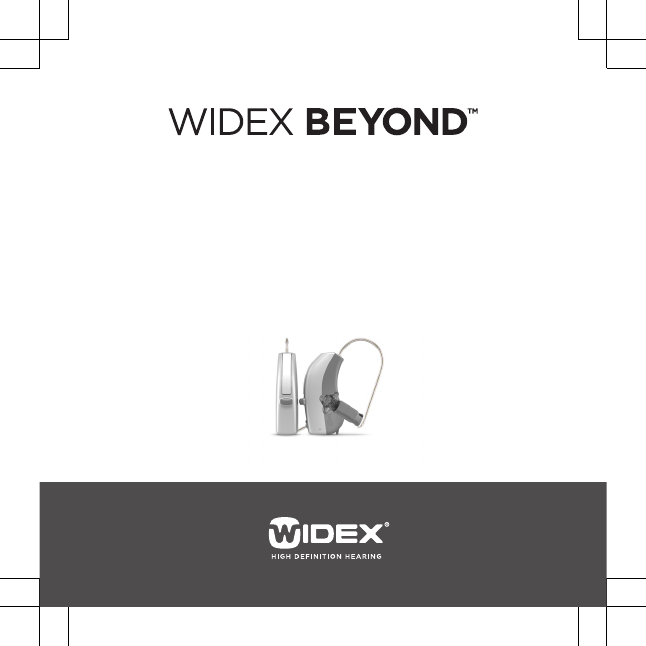
USER INSTRUCTIONS
THE WIDEX BEYOND™ FAMILY
B-F2 model
RITE
Receiver-in-the-ear

YOUR WIDEX® HEARING AID
(To be filled out by the hearing care professional)
Your hearing aid series:
PROGRAMS
Universal Audibility Extender
Quiet Audibility Extender
Transport Audibility Extender
Urban Audibility Extender
Party Audibility Extender
Music Audibility Extender
T Audibility Extender
M+T Audibility Extender
2

SPECIAL PROGRAMS
Zen Audibility Extender
Phone Audibility Extender
SMARTTOGGLE PROGRAMS
Zen+ Audibility Extender
Phone+ Audibility Extender
NOTE
Read this booklet and the booklet "Ear-sets for Widex hearing aids"
carefully before your start using your hearing aid.
NOTE
You can also download a special app that allows you to operate your
hearing aids using selected mobile devices. If you'd like to do so, visit
the App Store or Google Play* and download it.
*The app will be available in Google Play in the near future.
3

CONTENTS
YOUR WIDEX HEARING AID....................................................................6
Welcome to Widex..........................................................................................6
Important safety information.........................................................................8
THE HEARING AID..................................................................................11
Indications for use...........................................................................................11
Intended use.................................................................................................... 11
The battery.......................................................................................................11
Sound signals..................................................................................................14
How to tell right from left..............................................................................15
Turning the hearing aid on and off.............................................................. 16
Putting on and removing the hearing aid...................................................17
Programs.........................................................................................................18
Sound and program adjustment..................................................................21
Using a phone with your hearing aids........................................................ 22
CLEANING.............................................................................................23
Tools................................................................................................................23
Cleaning the hearing aid...............................................................................23
ACCESSORIES.......................................................................................25
TROUBLESHOOTING.............................................................................26
REGULATORY INFORMATION...............................................................29
4

EC directives...................................................................................................29
FCC and IC statements..................................................................................30
SYMBOLS..............................................................................................34
5

YOUR WIDEX HEARING AID
Welcome to Widex
Congratulations on your new hearing aid.
Use your hearing aid regularly, even if it takes some time getting
used to it. Infrequent users don’t usually get the full benefit of a
hearing aid.
NOTE
Your hearing aid and its accessories may not look exactly as illustrated
in this booklet. We also reserve the right to make any changes we con-
sider necessary.
6
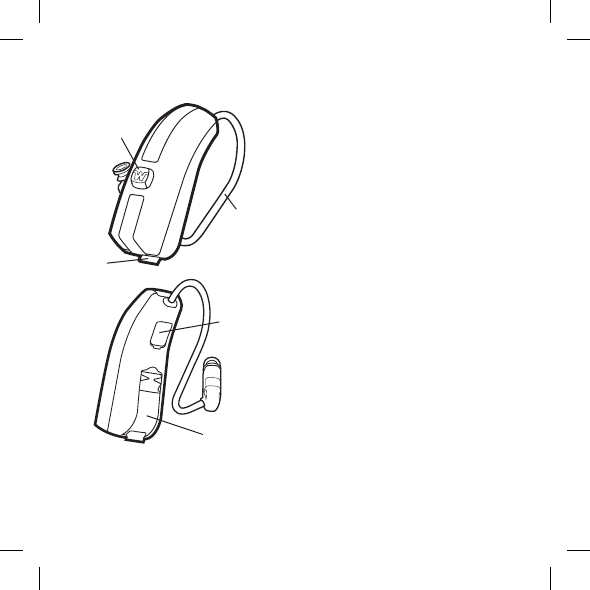
Your hearing aid at a glance
1
2
3
4
5
1. Push button
2. Nail grip
3. Earwire
4. Battery compartment
5. Right/left identification
7

Important safety information
Read these pages carefully before you begin using your hearing
aid.
Hearing aids and batteries can be dangerous if swallowed or
used improperly. Swallowing or improper use can result in se-
vere injury or even fatalities. In case of ingestion, contact a doc-
tor immediately.
Take your hearing aids out when you are not using them. This
will help to ventilate the ear canal and prevent ear infections.
Contact your doctor or hearing care professional immediately if
you suspect you may have an ear infection.
Remove your hearing aids before showering, swimming or using
a hair dryer.
Do not wear your hearing aids when applying perfume, spray,
gels, lotion or cream.
Do not dry your hearing aid in a microwave oven - this will ruin
it.
8

Never use other people’s hearing aids and never allow others to
use yours, as this could damage your hearing.
Never use your hearing aids in environments where there may
be explosive gases, such as in mines, etc.
Keep hearing aids, their parts, accessories and batteries away
from children.
Never try to open or repair the hearing aid yourself. Contact your
hearing care professional if you need to have your hearing aid
repaired.
Your hearing aids contain radio communication technology. Al-
ways observe the environment in which you are using them. If
any restrictions apply, you must take precautions to comply with
these.
Your hearing aid is very powerful and it can play sounds that
exceed a level of 132 dB. There may therefore be a risk of dam-
aging your remaining hearing.
Do not expose your hearing aids to extreme temperatures or
high humidity, and dry them quickly if they get wet, or if you
perspire heavily.
9

Your hearing aids should be stored and transported within the tem-
perature and humidity ranges of -18°C to +40°C (-0,4°F to 104°F)
and 10%-95% rH.
Storage and transportation up to 60°C (140°F) with 10%-95% rH
can be accepted in shorter periods (duration of max. of 2 weeks).
Your hearing aids are designed to operate from 0°C (32°F) to 50°C
(122°F).
For more information about your hearing aids, visit: www.wi-
dex.com.
10

THE HEARING AID
Indications for use
The hearing aids are indicated for individuals with a range of hear-
ing loss from minimal (10dB HL) to severe-to-profound (100 dB HL)
and all hearing loss configurations.
They are to be programmed by licensed hearing care professionals
(audiologists, hearing aid specialists, otolaryngologists) who are
trained in hearing (re)habilitation.
Intended use
The hearing aids are intended as air conduction amplification devi-
ces to be used in everyday listening environments. The hearing aids
may be equipped with the Zen program intended to provide a re-
laxing sound background (i.e. music/noise source) for adults who
desire to listen to such a background in quiet.
The battery
Use a type 312 zinc-air battery for your hearing aid.
11

Always use a fresh, new battery that is precisely the kind recom-
mended by your hearing care professional.
NOTE
Check that the battery is completely clean and free of any residue be-
fore inserting it in the hearing aid. Otherwise your hearing aid may not
function as expected.
Never attempt to recharge your hearing aid batteries, as they
could explode.
Never leave a flat battery in the hearing aids while storing them.
It could leak and ruin your hearing aid.
Dispose of used batteries as indicated on the packaging and take
note of the expiry date.
Low battery indication
When the battery is flat, a sound signal will play. If the battery
drains suddenly there may however be no warning. We recom-
mend carrying a spare battery with you wherever you go.
Changing the battery
To change the battery, do as follows:
12
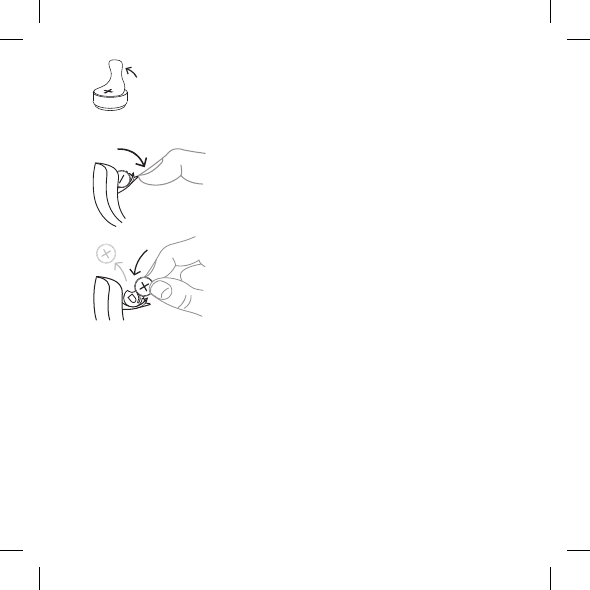
Take the adhesive tab off the new
battery and make sure there is no
sticky substance left on it. Let it
"breathe" for 60 seconds.
Use the nail grip to gently swing
the battery door open and re-
move the old battery.
Now place the new battery in the
drawer as shown. Close the draw-
er. If it doesn't close easily, the
battery is not placed correctly.
If you are not using the hearing
aid for a few days, remove the
battery.
NOTE
Avoid dropping your hearing aid - hold the hearing aid above a soft
surface while changing the battery.
13
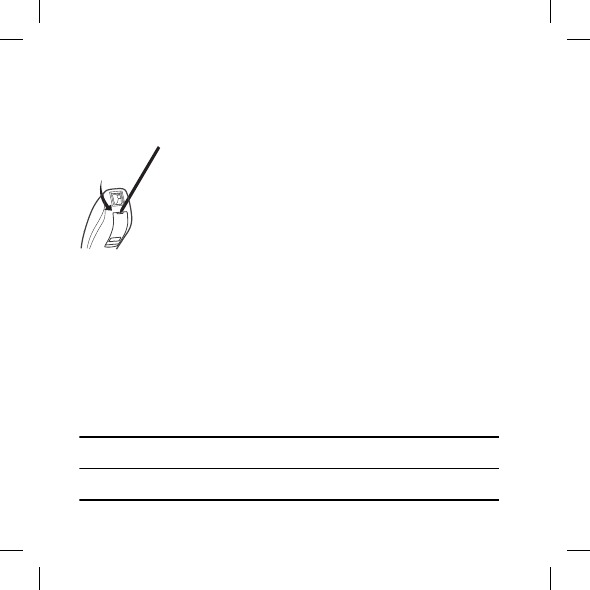
Tamper-resistant battery drawer
If the hearing aid is going to be used by a child, you can ask your
hearing care professional to provide it with a tamper-resistant bat-
tery drawer.
To open battery drawer, use the special tool
you've received, and do as illustrated.
Sound signals
Your hearing aid plays sounds to inform you that certain features
have been activated or that you have changed programs. These
sounds may be spoken messages or tones, depending on your
needs and preferences.
Program 1 Message/one short beep
Program 2 Message/two short beeps
Program 3 Message or three short beeps
14

Program 4 Message/one short and one long beep
Program 5 Message/one long beep and two short beeps
Zen+ Message/tone
Ask your hearing care professional to turn these sounds signals off
if you don't need them.
Lost partner
(Only available in wireless 440-series)
Your hearing care professional can turn on a feature in your hearing
aid that warns you whenever it loses contact with the hearing aid in
the opposite ear. You will hear a spoken message in your ear.
How to tell right from left
The hearing aid for your right ear has a red mark. The hearing aid
for your left ear has a blue mark.
15
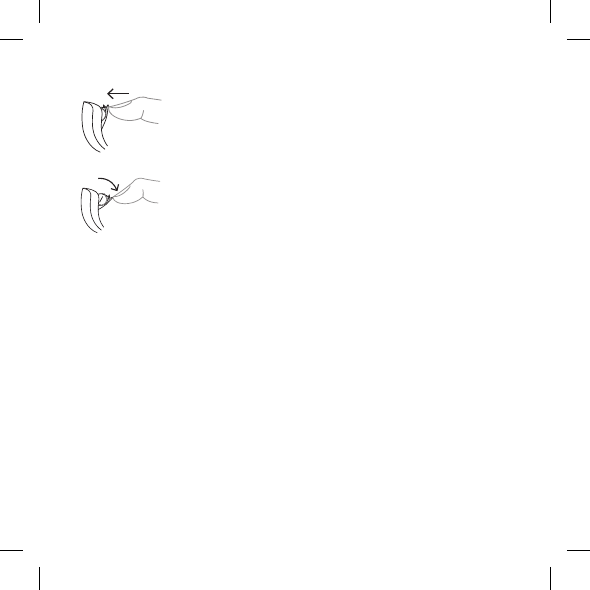
Turning the hearing aid on and off
To turn the hearing aid on, close the battery lid.
The hearing aid will play a sound signal to indi-
cate that it is on, unless your hearing care pro-
fessional has deactivated this function.
To turn off the hearing aid, push the battery lid
downwards.
NOTE
You can also cup the hearing aid in your hand to verify that it is turned
on. If it's on, it will whistle.
Don't forget to turn off the hearing aid when it is not in use.
16
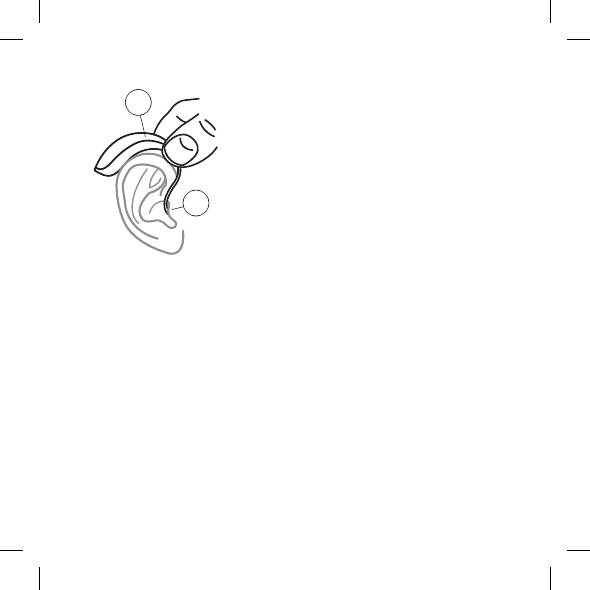
Putting on and removing the hearing aid
1
2
1. Insert the ear-set in the ear
while holding the lower part of
the tube. Pulling the outer ear
upwards and backwards at the
same time can be helpful.
2. Then place the hearing aid be-
hind the ear. The hearing aid
should rest comfortably on the
ear, close to your head.
Your hearing aid can be fitted using different types of ear-sets. See
the separate ear-set manual for more information about your ear-
set.
NOTE
If the hearing aid doesn't feel comfortable, or if it doesn't fit properly,
causing irritation, redness or the like, contact your hearing care profes-
sional.
17
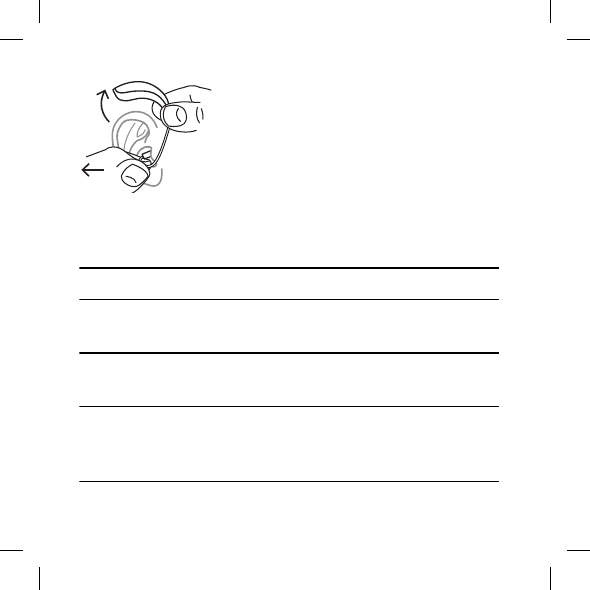
Removing the hearing aid
Start by removing the hearing aid
from behind the ear.
Then take the ear-set carefully
out of the ear canal while you
hold the lower part of the tube.
Programs
PROGRAMS USE
Universal For everyday use
Quiet Special program for listening in quiet envi-
ronments
Transport For listening in situations with noise from
cars, trains, etc.
Urban For listening in situations with changing
sound levels (in supermarkets, noisy work-
places or similar)
18
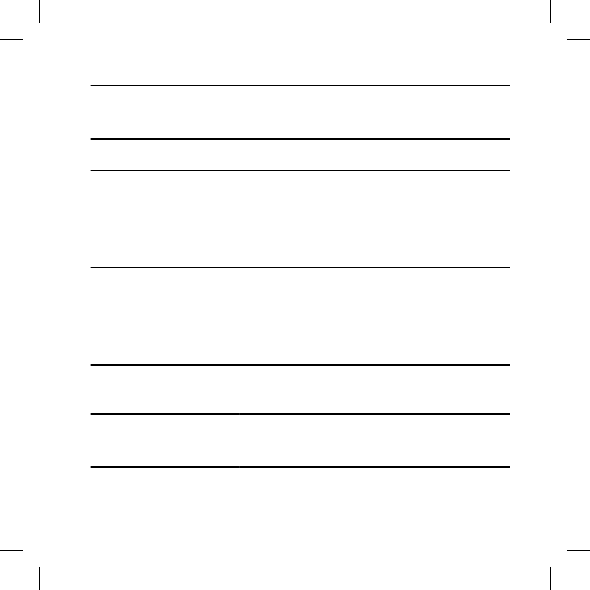
PROGRAMS USE
Party For listening in situations with many people
talking at the same time
Music For listening to music
T With this program you listen through the
hearing aid's telecoil, which allows you to
listen directly to the sound without back-
ground noise (requires a teleloop system)
M+T This program is a combination of the hear-
ing aid's microphone and the telecoil. You
listen to the sound source, but can also hear
other sounds
SPECIAL PROGRAMS USE
Zen Plays tones or noise for a relaxing sound
background
19
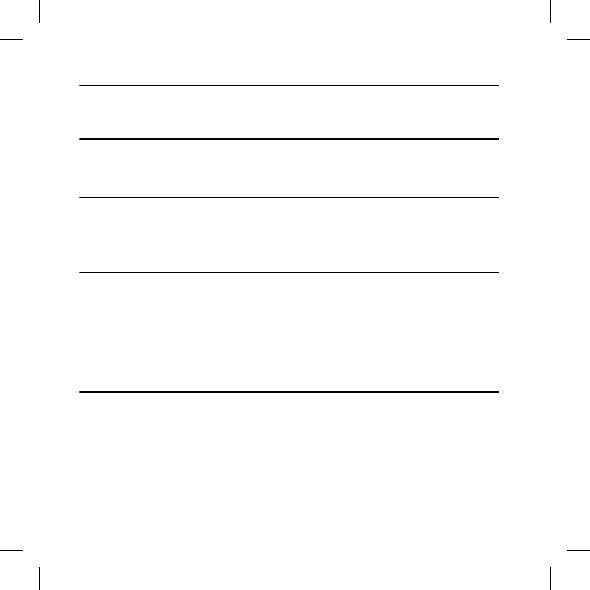
SPECIAL PROGRAMS USE
Phone This program is designed for listening to
phone conversations
SMARTTOGGLE PRO-
GRAMS
USE
Zen+ This program is similar to Zen but allows
you to listen to different types of tones or
noise
Phone+ This program lets you listen to the phone
and avoid the surrounding sounds. One of
your hearing aids transmits the phone con-
versation to the other, so that you can lis-
ten with both ears
NOTE
You can only have one SmartToggle program on your hearing aid.
20

Depending on your hearing loss, your hearing care professional can
activate the Audibility Extender feature. Ask your hearing care pro-
fessional if you could benefit from this.
If your needs and preferences change over time, your hearing care
professional can easily change your program selection
Sound and program adjustment
If you have two hearing aids, the push button can be programmed
in several ways:
As a dedicated program button:
To change programs, just tap the button. To access and exit Smart-
Toggle programs, push and hold the push button down for more
than one second (this setting is optional). Once you have accessed
the SmartToggle program, you can change among the different Zen
styles by short taps on the button.
As a dedicated sound adjustment button:
Tap the button on your right hearing aid if you’d like more audibility
and more volume. If you need to decrease the volume or you’d like
more comfort, tap the button on your left hearing aid.
21
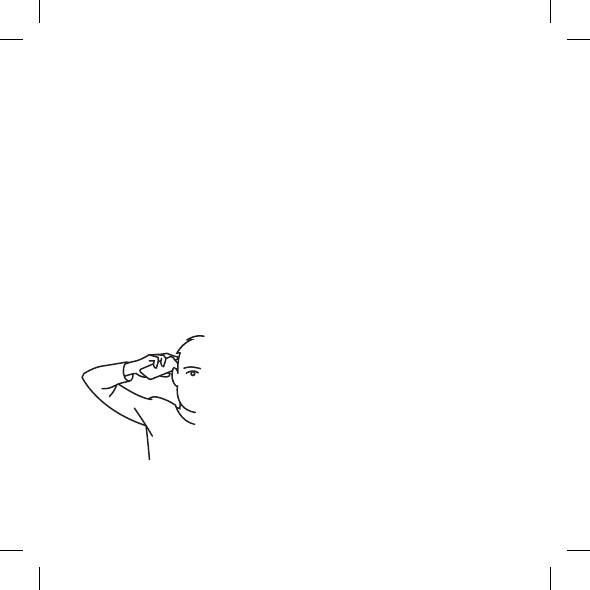
A long push on either of your hearing aids will mute and unmute
the sound (this setting is optional).
As a combined program and sound adjustment button:
If you have this option, tap the button on your right hearing aid if
you’d like more audibility and more volume. If you need to de-
crease the volume or if you’d like more comfort, just tap the button
on your left hearing aid. A long push on either of your hearing aids
will change programs.
If you only have one hearing aid, a short tap will change programs
and a long tap will allow you to access the SmartToggle programs.
Using a phone with your hearing aids
When you use a phone, hold it against your
head at an angle above your ear, rather than
directly against the ear.
22
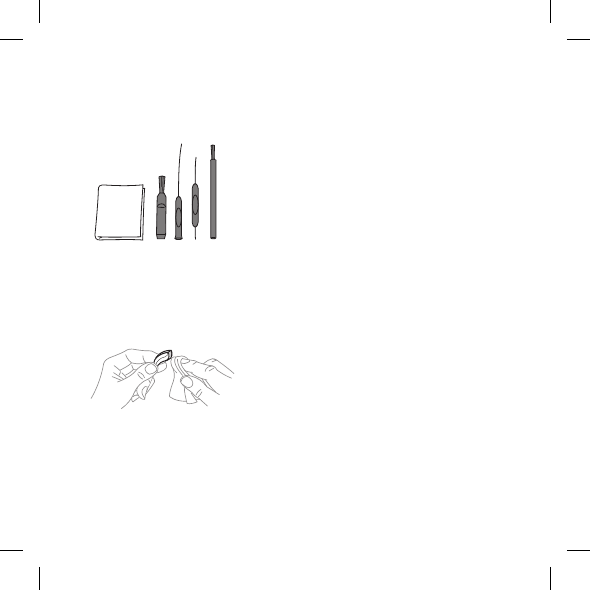
CLEANING
Tools
You will receive the following cleaning tools with your hearing aid.
1. 2. 3. 4. 5.
1. Cloth
2. Brush
3. Long wax removing tool
4. Short wax removing tool
5. Battery magnet
Cleaning the hearing aid
Cleaning your hearing aid every day will make it more efficient and
more comfortable to wear.
Wipe the hearing aid with a soft cloth
(for example the cloth you received
from your hearing care professional).
If the microphone openings are still
blocked, contact your hearing care pro-
fessional.
23

Dry your hearing aid quickly if it gets wet, or if you perspire heavily.
Some people use a special dehumidifier like Widex Dry-Go to help
keep their hearing aids dry and clean. Ask your hearing care profes-
sional if this is right for you.
Leave the battery compartment open to ventilate the hearing aid.
For information on how to clean your ear-set, see the ear-set man-
ual.
Do not use any kind of liquid or disinfectant to clean your hearing
aid.
Clean and inspect your hearing aid every day after use to check
that it is not broken. If the hearing aid breaks while you are
wearing it, leaving small fragments in your ear canal, contact
your doctor. Never try to take out the fragments yourself.
24

ACCESSORIES
You can use a variety of accessories with your hearing aid. To see whether you
could benefit from using these accessories, ask your hearing care professional.
Name Use
RC-DEX remote control
TV-DEX for listening to TV and audio
PHONE-DEX for easy landline use
FM+DEX for streaming audio and FM signals
T-DEX for connecting hearing aids to mobile phones via a telecoil
UNI-DEX for connecting hearing aids to mobile phones
CALL-DEX for easy wireless connection to mobile phones
COM-DEX for wireless connection to mobile phones and other devi-
ces via bluetooth
Available in some countries only.
25

TROUBLESHOOTING
These pages contain advice on what to do if your hearing aid stops
working or if it doesn't work as expected. If the problem persists,
contact your hearing care professional.
Problem Possible cause Solution
The hearing aid is
completely silent
It is not turned on Make sure the battery
drawer is completely
closed
The battery does not
work
Insert a new battery
The hearing aid vol-
ume is not powerful
enough
Your ear is blocked by
earwax
Contact your doctor
Your hearing may
have changed
Contact your hearing
care professional/
doctor
The hearing aid whis-
tles continuously
Your ear is blocked by
earwax
Contact your doctor
26

Problem Possible cause Solution
Your two hearing
aids are not working
in synchrony
The connection be-
tween the hearing
aids is lost
Turn them off and on
again
The hearing aids do
not respond with a
corresponding
change in volume or
program to the con-
trol device
a. The device is used
beyond the transmis-
sion range
b. Strong electromag-
netic interference in
the vicinity
c. The device and the
hearing aids are not
matched
a. Move the device
closer to the hearing
aids.
b. Move away from
known source of EM
interference
c. Check with your
hearing care profes-
sional to make sure
the device is matched
with hearing aids
27

Problem Possible cause Solution
You hear “interrup-
ted” speech (on and
off) from the hearing
aids or no speech
(muted) from the
transmitting hearing
aid.
a. The battery in one
of the hearing aids
has expired
b. Strong electromag-
netic interference in
the vicinity
a. Replace battery in
one or both hearing
aids
b. Move away from
known sources of in-
terference
NOTE
This information covers only the hearing aid. See the “Ear-sets for Wi-
dex hearing aids” user manual for information specific to your ear-set.
If the problems persist, contact your hearing care professional for as-
sistance.
28

REGULATORY INFORMATION
EC directives
Directive 1999/5/EC
Hereby, Widex A/S declares that this B-F2 is in compliance with the
essential requirements and other relevant provisions of Directive
1999/5/EC.
A copy of the Declaration of Conformity according to 1999/5/EC
can be found at:
http://widex.com/doc
N26346
Information regarding disposal
Do not dispose of hearing aids, hearing aid accessories and batter-
ies with ordinary household waste.
Hearing aids, batteries and hearing aid accessories should be dis-
posed of at sites intended for waste electrical and electronic equip-
ment, or given to your hearing care professional for safe disposal.
29

FCC and IC statements
FCC ID: TTY-BF2
IC: 5676B-BF2
Federal Communications Commission Statement
This device complies with part 15 of the FCC Rules. Operation is sub-
ject to the following two conditions:
(1) This device may not cause harmful interference, and
(2) this device must accept any interference received, including in-
terference that may cause undesired operation.
NOTE:
This equipment has been tested and found to comply with the lim-
its for a Class B digital device, pursuant to part 15 of the FCC Rules.
These limits are designed to provide reasonable protection against
harmful interference in a residential installation. This equipment
generates, uses and can radiate radio frequency energy and, if not
installed and used in accordance with the instructions, may cause
harmful interference to radio communications. However, there is no
30

guarantee that interference will not occur in a particular installation.
If this equipment does cause harmful interference to radio or televi-
sion reception, which can be determined by turning the equipment
off and on, the user is encouraged to try to correct the interference
by one or more of the following measures:
— Reorient or relocate the receiving antenna.
— Increase the separation between the equipment and receiver.
— Connect the equipment into an outlet on a circuit different from
that to which the receiver is connected.
— Consult the dealer or an experienced radio/TV technician for
help.
NOTE:
This equipment complies with FCC radiation exposure limits set
forth for an uncontrolled environment. This transmitter must not be
co-located or operating in conjunction with any other antenna or
transmitter.
Changes or modifications to the equipment not expressly approved
by Widex could void the user’s authority to operate the equipment.
31

Industry Canada Statement / Déclaration d’industrie Canada
Under Industry Canada regulations, this radio transmitter may only
operate using an antenna of a type and maximum (or lesser) gain
approved for the transmitter by Industry Canada.
To reduce potential radio interference to other users, the antenna
type and its gain should be so chosen that the equivalent isotropi-
cally radiated power (e.i.r.p.) is not more than that necessary for
successful communication.
This device complies with Industry Canada licence-exempt RSS
standard(s). Operation is subject to the following two conditions:
(1) this device may not cause interference, and
(2) this device must accept any interference, including interference
that may cause undesired operation of the device.
32

Conformément à la réglementation d’Industrie Canada, le présent
émetteur radio peut fonctionner avec une antenne d’un type et
d’un gain maximal (ou inférieur) approuvé pour l’émetteur par In-
dustrie Canada.
Dans le but de réduire les risques de brouillage radioélectrique à
l’intention des autres utilisateurs, il faut choisir le type d’antenne et
son gain de sorte que la puissance isotrope rayonnée équivalente
(p.i.r.e.) ne dépasse pas l’intensité nécessaire à l’établissement
d’une communication satisfaisante.
Le présent appareil est conforme aux CNR d’Industrie Canada appli-
cables aux appareils radio exempts de licence. L’exploitation est au-
torisée aux deux conditions suivantes :
(1) l’appareil ne doit pas produire de brouillage, et
(2) l’utilisateur de l’appareil doit accepter tout brouillage radioélec-
trique subi, même si le brouillage est susceptible d’en compromet-
tre le fonctionnement.
33
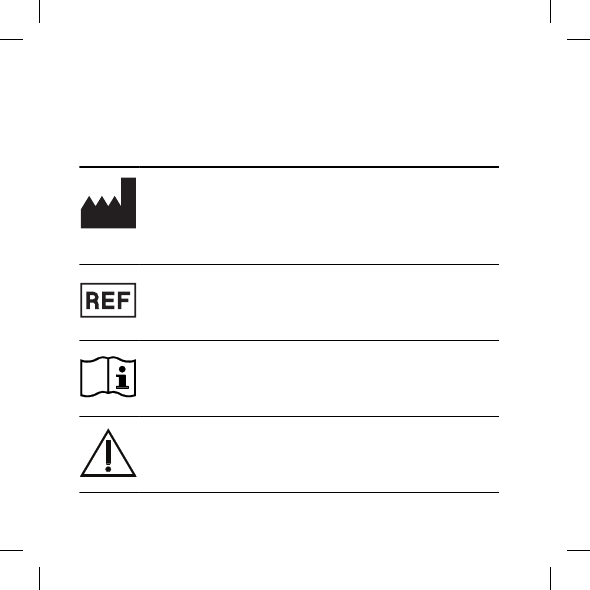
SYMBOLS
Symbols commonly used by Widex A/S in medical device labelling (la-
bels/IFU/etc.)
Symbol Title/Description
Manufacturer
The product is produced by the manufacturer whose name and ad-
dress are stated next to the symbol. If appropriate, the date of
manufacture may also be stated.
Catalogue number
The product’s catalogue (item) number.
Consult instructions for use
The user instructions contain important cautionary information
(warnings/precautions) and must be read before using the product.
Warning
Text marked with a warning symbol must be read before using the
product.
34
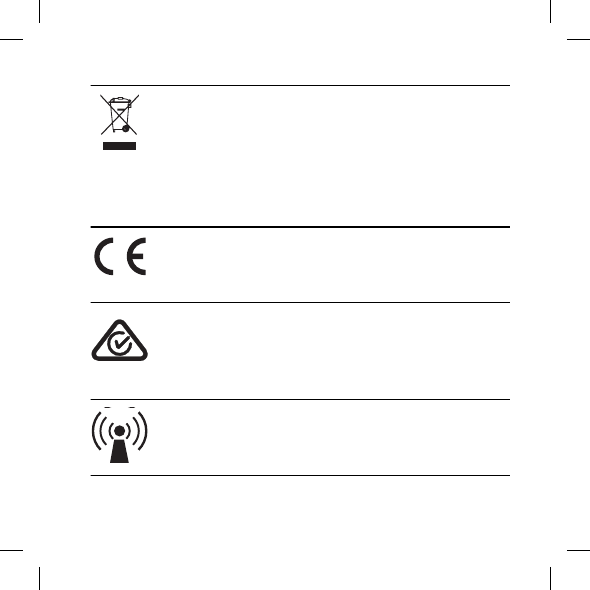
Symbol Title/Description
WEEE mark
“Not for general waste”
When a product is to be discarded, it must be sent to a designated
collection point for recycling and recovering to prevent the risk of
harm to the environment or human health as a result of the presence
of hazardous substances.
CE mark
The product is in conformity with the requirements set out in Europe-
an CE marking directives.
RCM mark
The product complies with electrical safety, EMC and radio spectrum
regulatory requirements for products supplied to the Australian or
New Zealand market.
Interference
Electromagnetic interference may occur in the vicinity of the product.
35
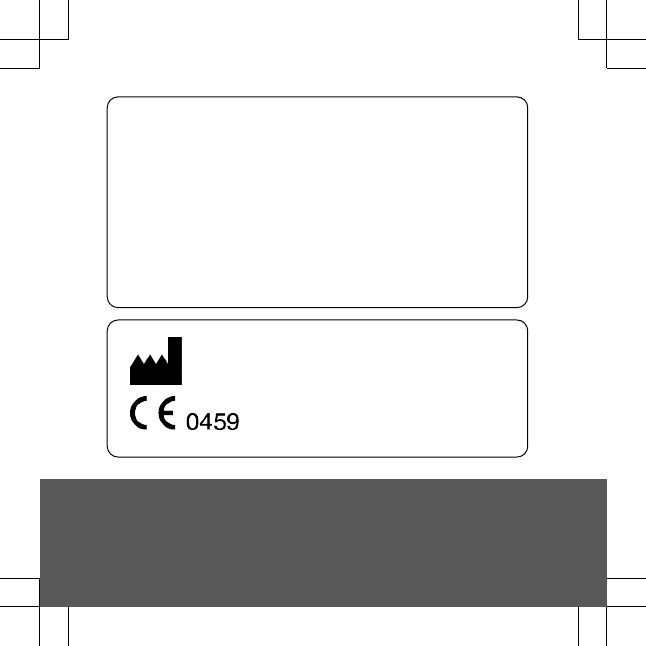
WIDEX A/S Nymoellevej 6, DK-3540 Lynge, Denmark
www.widex.com
Manual no.:
9 514 0344 001 #01
Issue:
2016-02 9 514 0344 001 #01